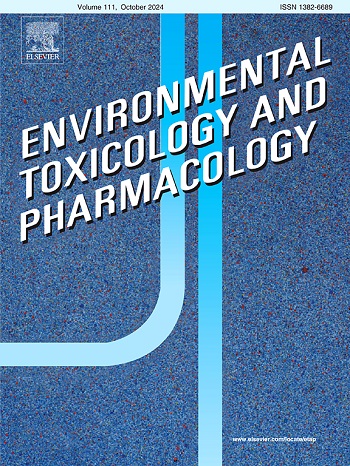Assessing aflatoxin exposure in the United Arab Emirates (UAE): Biomonitoring AFM1 levels in urine samples and their association with dietary habits
IF 4.2
3区 环境科学与生态学
Q2 ENVIRONMENTAL SCIENCES
引用次数: 0
Abstract
Background
Aflatoxins, known for their carcinoginc properties and produced by Aspergillus fungi, pose a substantial threat to public health, particularly in regions with hot and humid climates, where individuals are exposed to these toxins through contaminated food. The primary objective of this study was to assess the extent of aflatoxin exposure in the Emirate of Sharjah employing Aflatoxin M1 (AFM1) as a biomarker in urine samples from adult participants. Furthermore, this study aimed to explore the relationship between dietary habits and AFM1 levels in order to establish a potential link.
Methods
In a cross-sectional study design, a total of 144 adults (73 females and 71 males) were recruited for participation. The urine samples obtained from participants were subjected to analysis for AFM1 concentrations utilizing the enzyme-linked immunosorbent assay (ELISA) method. Additionally, structured questionnaires were administered to collect information on the dietary and lifestyle habits of the participants. To explore the relationship between dietary factors and AFM1 levels, various statistical analyses, including linear regression and the Mann-Whitney U test, were performed.
Results
AFM1 was detected in 69 % of the samples under invstigation, wherein males exhibited a higher mean level (0.912 ng/mg creatinine) in comparison to females (0.676 ng/mg creatinine). The overall mean concentration of AFM1 was determined to be 0.792 ng/mg creatinine. It is worth noting that there was a significant correlation between rice consumption and heightened AFM1 exposure among males, while no such correlation was observed among females.
Conclusion
This study conducted in the UAE provides novel perspectives on aflatoxin exposure, shedding light on the gender-specific correlation between rice consumption and aflatoxin levels among males. These findings hold significant implications for guiding public health interventions and underscore the pivotal role of ongoing surveillance and stringent food safety regulations in mitigating the hazards associated with aflatoxin contamination.
评估阿拉伯联合酋长国(阿联酋)的黄曲霉毒素暴露情况:尿液样本中 AFM1 水平的生物监测及其与饮食习惯的关系。
本文章由计算机程序翻译,如有差异,请以英文原文为准。
求助全文
约1分钟内获得全文
求助全文
来源期刊
CiteScore
7.00
自引率
4.70%
发文量
185
审稿时长
34 days
期刊介绍:
Environmental Toxicology and Pharmacology publishes the results of studies concerning toxic and pharmacological effects of (human and veterinary) drugs and of environmental contaminants in animals and man.
Areas of special interest are: molecular mechanisms of toxicity, biotransformation and toxicokinetics (including toxicokinetic modelling), molecular, biochemical and physiological mechanisms explaining differences in sensitivity between species and individuals, the characterisation of pathophysiological models and mechanisms involved in the development of effects and the identification of biological markers that can be used to study exposure and effects in man and animals.
In addition to full length papers, short communications, full-length reviews and mini-reviews, Environmental Toxicology and Pharmacology will publish in depth assessments of special problem areas. The latter publications may exceed the length of a full length paper three to fourfold. A basic requirement is that the assessments are made under the auspices of international groups of leading experts in the fields concerned. The information examined may either consist of data that were already published, or of new data that were obtained within the framework of collaborative research programmes. Provision is also made for the acceptance of minireviews on (classes of) compounds, toxicities or mechanisms, debating recent advances in rapidly developing fields that fall within the scope of the journal.

 求助内容:
求助内容: 应助结果提醒方式:
应助结果提醒方式:


